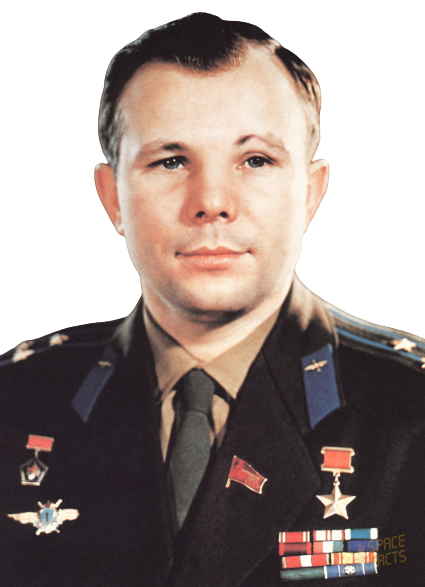Biography
Date of birth: March 9, 1934
Date of death: March 27, 1968
Place of birth: Western Region, USSR
Career: hero, cosmonaut
Yuri Gagarin is a Soviet pilot-cosmonaut, whose biography everyone knows since high school. Gagarin is the man who made the first flight into space. He became a model and a legend not only for the inhabitants of the USSR – the cosmonaut was an honorary citizen of foreign cities and an international public figure. Yuri Alekseyevich opened a new page in the exploration of space and became a symbol of the development of Soviet science and aviation.
Childhood and Youth
Yuri Alekseyevich Gagarin was born on March 9, 1934, in the village of Klushino in the Western Region of the USSR (now Smolensk Oblast) into a family of well-to-do peasants. The boy was the third of four children. Yury’s childhood was peaceful and joyful, his father and mother paid a lot of attention to him. Alexei Ivanovich, the head of the family, was a wood craftsman and enjoyed introducing his children to it.
At six years of age Yura went to school, but managed to finish only the first grade, before the Great Patriotic War began. German troops invaded part of the USSR, they reached Klushino, so that the work of many state institutions, including the school, was discontinued. Having become a famous person, Yuri Alekseevich preferred never to recall the gloomy times of the occupation. It is known that the German soldiers drove the Gagarins family out of the house and, retreating, took the youth with them as prisoners of war. This is how his brother and sister were taken away.
In 1943 Klushino was liberated, and soon after the war ended, the Gagarins moved to Gzhatsk, where Yuri continued his studies. He was a very capable and inquisitive young man, engaged in various activities ranging from music to photography.
After graduating from 6th grade, Gagarin decided to move to Moscow, as he felt too cramped in a small town. His parents tried to dissuade the ambitious young man, but failed to do so. So in 1949, 15-year-old Yuri Gagarin moved to the capital.



The young man lived with relatives, studied at a trade school while simultaneously completing his seventh grade program at the Working Youth School. At the same time, he became interested in basketball and soon became captain of the team. In 1951, Gagarin moved to Saratov, where he began training at an industrial technical school. During his studies, his first acquaintance with the sky occurred.
In 1954, Yuri got into the club of amateur aviators, where the reports of the founding fathers of astronautics were read. Having listened to the lectures of Konstantin Tsiolkovsky, the young man simply fell in love with the idea of flying beyond the Earth, though he could hardly imagine how his hobby would turn out. The following year Gagarin graduated from technical school, but continued to attend the flying club and managed to make a few independent flights on a small training aircraft.
A few months after the future cosmonaut graduated, he was called up for military service at a military aviation school in Chkalov (now Orenburg). There Gagarin had a serious conflict that almost cost him his life.
Yuri Alekseyevich, appointed assistant platoon commander, was extremely strict in terms of discipline, which did not suit his fellow students. One night he was caught and severely beaten, after which the young man spent a month in hospital before he could return to duty. It is noteworthy that this incident did not break his fighting spirit at all – he did not change his attitude toward his charges.
Cadet Gagarin easily coped with any tasks, except landing an airplane. The apparatus was constantly nipping at his nose, and due to the fact that the requirements to trainees were extremely strict, it was decided to expel Gagarin.
The young man, who could not imagine his life without the sky, was about to give up on his career, but at that moment the head of the school, who was troubled by the mysterious failures of the best student, paid attention to the low height of the guy (165 cm, and according to some sources even 157) and suggested that this is the reason why he has problems with the view angle during boarding. Gagarin was given another chance, and before the flight he was given a padding that increased the height of the seat. The assumption turned out to be correct. In 1957 Yuri Gagarin graduated from the college and started serving in Murmansk region.
Cosmonautics
In 1959 Gagarin served to the rank of senior lieutenant, earning the title of military pilot 3rd class. At the same time, a decree on the search and selection of candidates for a flight beyond Earth was enshrined at the state level. Having heard about this, the pilot wrote a report to his leadership, asking to be enlisted as a candidate.
The selection was not based on skills or merit. Sergei Pavlovich Korolev, who headed the inspections, primarily looked at the physical data of applicants. The first rockets were limited in size and payload capacity. The figure that almost cost Gagarin his career, this time became a lucky ticket. If Gagarin were bigger, he would have been unable to fit into the rocket.



Despite the fierce competition Gagarin managed to win the sympathy even of his rivals. Reliable, strong and friendly, he envied no one, considered no one better or worse than himself, and this was evident in his behavior and manner of speech. Yuri Alekseyevich easily took the initiative, worked hard and with pleasure.
Gagarin adored the sky and gave himself wholly to his studies, for the rest he simply had no time. As a result, according to an anonymous survey conducted among the candidates for astronauts, most of them named Gagarin as the man most suitable for the first flight into space. Despite the fact that the pilot was not a leader in any area of training, he was found to be ideally suited for the journey into space based on a combination of skills, character traits and psychological stability.
After numerous checks the pilot was approved as one of the 20 would-be cosmonauts. In March 1960 he started training.
The choice of the candidate
In 1961, in view of the rivalry between the USSR and the United States there was a need as soon as possible to finally decide on the candidate and to make a flight in the beginning of the second decade of April. Then came the information that on April 20, it was planned to launch an American rocket with a man on board. Among the three proposed leaders, Gagarin was chosen as the first cosmonaut – this happened at the very last moment, less than a month before the flight. German Titov was confirmed as the backup.
The question of why the first man in space was Gagarin and not Titov worries history buffs to this day. There is a note in Korolev’s notes that Titov was more prepared than Gagarin, but at the decisive moment the latter was chosen. One version says that the political factor interfered with the choice. The first cosmonaut was to become a kind of symbol, and Yuri Alekseyevich, who had exemplary Slavic appearance and a “clean” biography of the whole family, seemed to the authorities more suitable for the role of a representative of Soviet cosmonautics.
Another theory claims that Titov was more important to the project, so they did not want to risk him in the first flight. Already at this time he was approved for the second. At the same time, work was being done on a long stay in space. Herman Titov seemed to Korolev suitable for spending a full day outside the Earth.

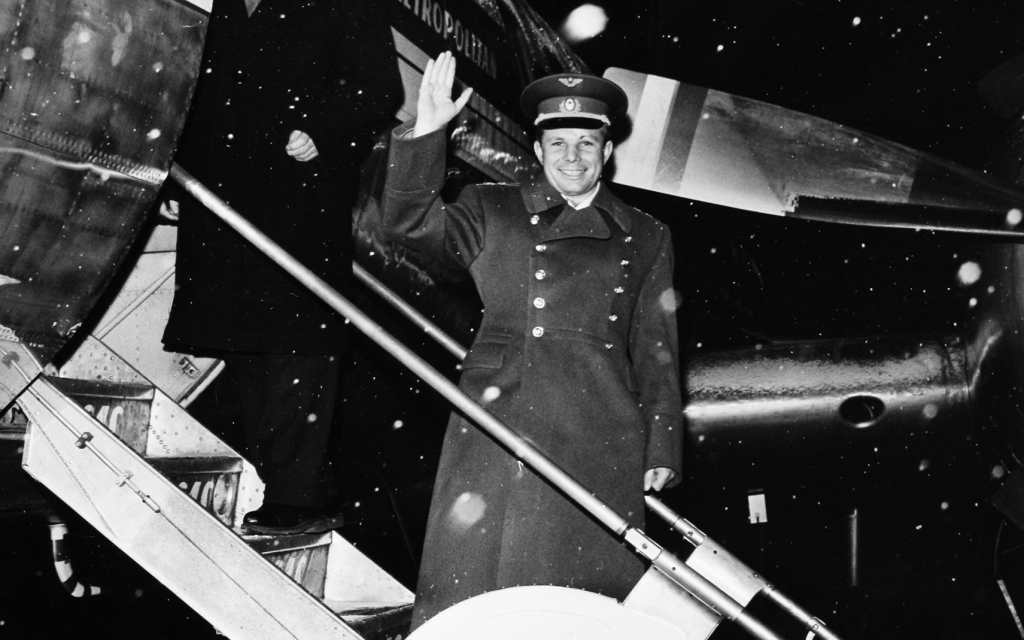

Another theory states that Gagarin was chosen personally by Korolev. The media claim that Yuri Alekseyevich became a favorite of his superiors after he was the only one of the preparatory group who responded to the offer to sit in the Vostok satellite ship when the group was first shown the ship.
According to the cosmonaut’s mother, Yuri passed a kind of unofficial exam arranged by Korolev.
The designer could not choose one pilot out of five similar ones. The men had almost the same height and weight, military rank. All except Captain Komarov served as senior lieutenants. Korolev conducted personal interviews with the candidates, asking a tricky question about the centrifuge.
Gagarin honestly stated that he felt bad about the test and even hated the centrifuge. The other candidates reported that their training was excellent. So Yuri passed the honesty test. It was of paramount importance to Korolev and the base command that the cosmonaut be able to talk frankly about all the problems and mistakes in the flight, rather than improvise and keep a face.
Journalists and researchers also admit that the very question of why Gagarin was the first man in space is incorrect, since Yuri Alekseyevich was not. In 1993, M. Rudenko and N. Varvarov published the names of the three pilots in the newspaper “Air Transport”. According to journalists, in 1957 during the suborbital flight pilot Alexei Ledovskikh died, in 1958 – Sergei Shaborin, and in 1959 – Andrei Mitkov.
The experiments remained classified, and in 1960, pilots were selected for the program of cosmonaut training. The article in the specialized newspaper was not challenged by any member of the space industry.
The first flight into space
The Vostok 1 space flight was fraught with enormous risks to Gagarin’s life. Due to the rush, some important systems were not duplicated, the ship was not equipped with a soft landing system, there was not even an emergency rescue system in case of malfunction during the launch. The chance that the first astronaut would die before taking off was very high.

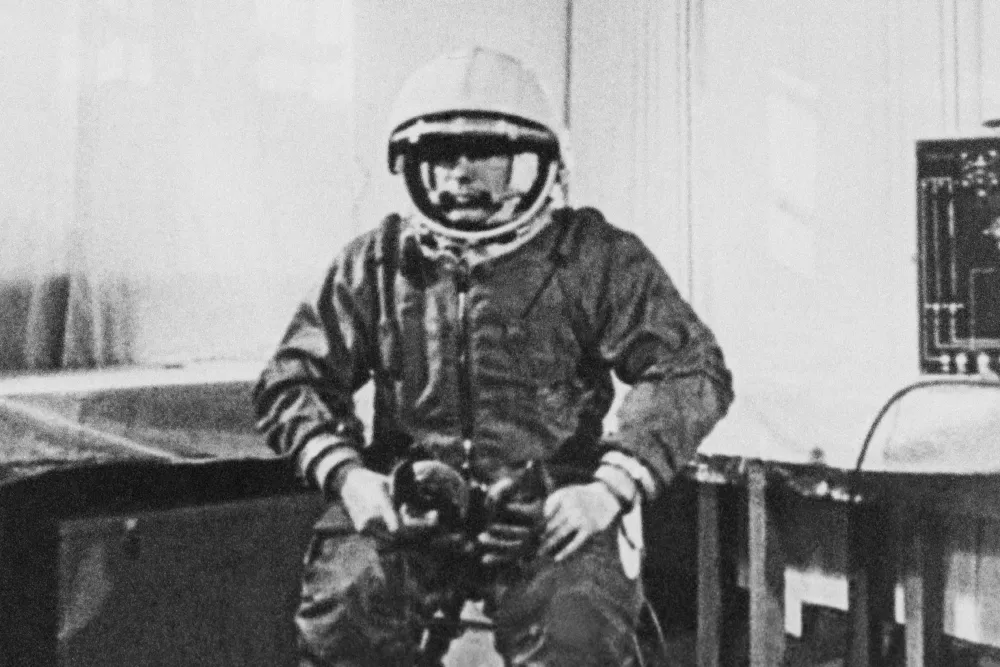
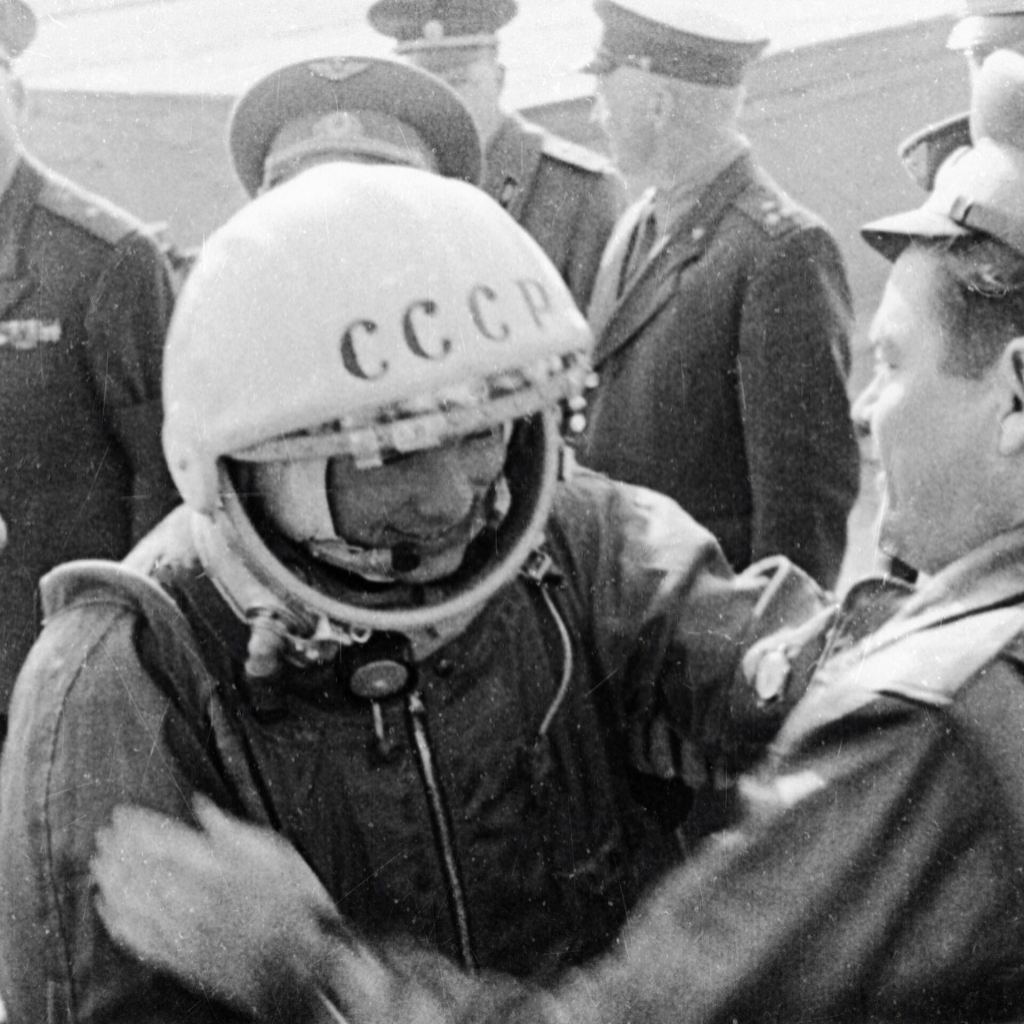
On April 12, 1961, the spaceship “Vostok 1” took off from the Baikonur Cosmodrome. Because there were equipment malfunctions, Gagarin took off 100 kilometers higher than originally planned. If there were problems with the braking system, the astronaut would have had to return to Earth for more than a month, with a supply of water and food for only 10 days.
Despite the many problems, Yuri Alekseyevich descended safely to Earth. His apparatus did not land where it was supposed to. The cosmonaut was taken to a nearby village, and from there Gagarin called his superiors to report a successful landing and the absence of injuries. Since the flight was secret, even the Soviet media did not learn about the technological breakthrough of the home country until the next day.
World Fame
As soon as the information became available, Gagarin became a global star. Khrushchev had a hand in this, insisting on a worthy reception for the hero. On April 14, 1961 there was a grand celebration in honor of the cosmonaut, during which Yuri Alekseyevich was given the title of Hero of the Soviet Union.
A month later, Gagarin was sent abroad on a “peace mission” where he was to visit more than 20 countries, working also in a diplomatic capacity. On all these trips, Gagarin proved himself to be a tactful and charming man. The personal charisma of Yuri Alekseyevich did much to enhance the positive image of the USSR.
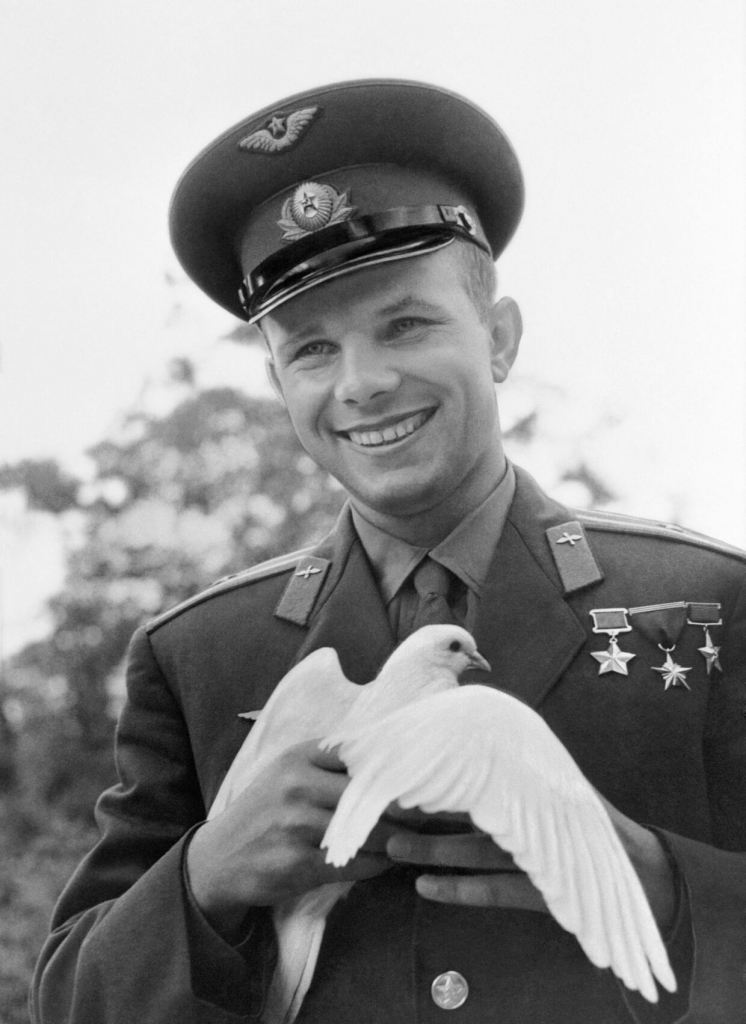


The next few years Yuri Gagarin was mostly engaged in public activities. The famous cosmonaut put a lot of effort into popularizing the cosmonautics, he himself was preparing to become a member of the lunar space crew. Also Major Gagarin entered the Military Air Engineering Academy, from which he graduated with the rank of colonel a month before his death.
Personal life
The pilot’s personal life also developed under the influence of his profession. In 1957, Yuri Gagarin married Valentina Goryacheva, an employee of the medical department at the Mission Control Center.
In this marriage they had two daughters: Lena was born in 1959 and Galia was born a month before her father’s legendary flight in March of 1961. Yuri always had time for their children. The cosmonaut and his daughters adored animals, so there were ducks, chickens, squirrels and a fallow deer in the Gagarins’ house. The pilot’s wife resisted fascination with the zoo, but later put up with it.
After the death of her husband, Valentina Goryacheva never married again.
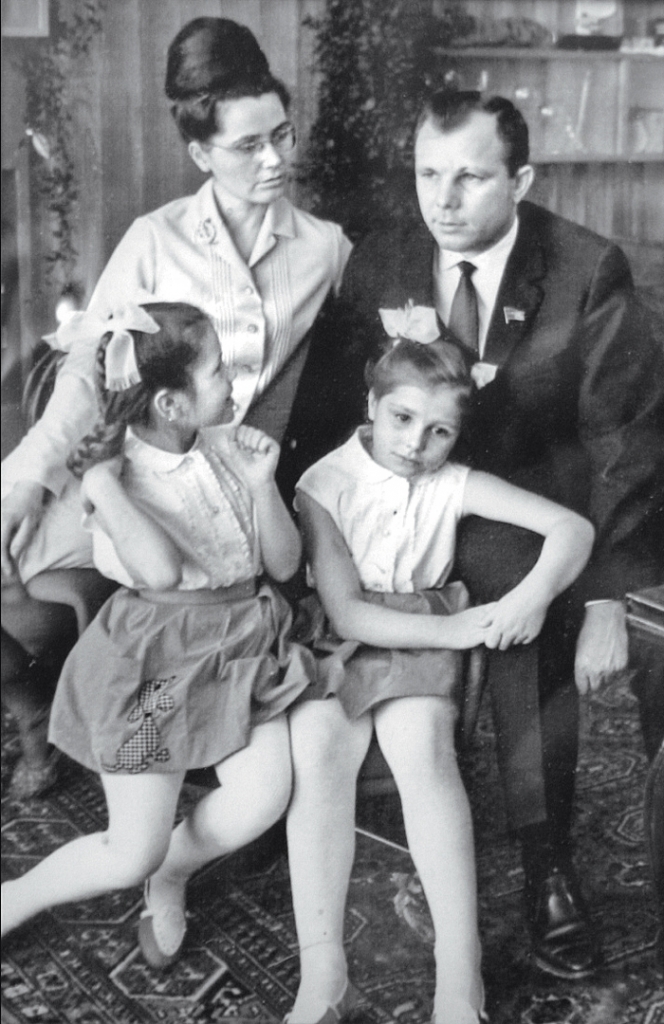

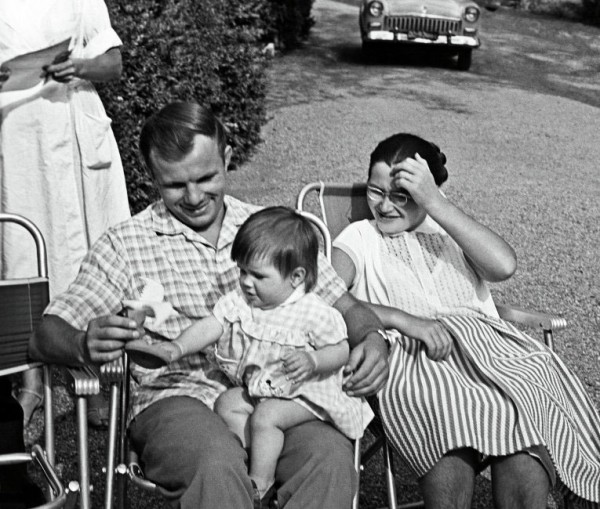
Gagarin’s eldest daughter Elena chose the profession of art historian, for many years she has been the director of the Moscow Kremlin Museum, and Galina became an economist. After the cosmonaut’s death, the Gagarins had grandchildren: Yelena had a daughter, Yekaterina, and Galina had a son, Yuri. The granddaughter of the cosmonaut decided to become an art critic, and his grandson – to tie his life with the state administration.
Death
On March 27, 1968, Gagarin was performing a training flight and for unknown reasons, he performed a maneuver from which he was unable to exit. The plane crashed into the ground, and Gagarin and his instructor Vladimir Seregin died. The bodies of the pilots were cremated and the urns with ashes were buried in the Kremlin wall.
One of the possible causes of the tragedy is named as approaching another plane and abrupt deviation from it, as a result of which the MiG-15UTI of Gagarin went into a spin. Because of incorrect data on weather conditions and instrument readings pilots simply did not have time to bring the plane out of the fall. For many years the truth has remained unknown.
The lack of a coherent official explanation gave rise to numerous speculations on the cause of death of the first astronaut. The conspiracy theories gained popularity. There were rumors that Gagarin himself staged his own death and escaped. Another version claimed that the pilot died while testing a new rocket, and the training flight covered the traces of a failed experiment in the space program.



In 2013, cosmonaut Alexei Leonov shared with the press declassified information about Gagarin’s last flight. The first version was fully confirmed. Unclearly, an SU-15 fighter jet happened to be next to Gagarin’s and Seregin’s plane, which drove the MiG-15UTI into a spiral with its flow. The pilots died before they could get the plane out of the fall.
Remembrance
Seven years later, a memorial was erected at the crash site to commemorate the pilots who died. It was not the only reminder of Gagarin – various institutions, vehicles and territorial units were named after the first cosmonaut.
Gagarin’s name was given to a ridge in Antarctica and many streets, for example, in the city of Ufa in the Sipailovo Microdistrict, Gagarin Avenue is in the Moscow District of St. Petersburg. Monuments dedicated to the cosmonaut have been erected in different cities of Russia and the world.
Yuri Alekseyevich was personally acquainted with Alexandra Pakhmutova and Nikol Dobronravov.In memory of the cosmonaut, the creative family couple created the cycle “Gagarin’s Constellation”, of which the song “You Know What a Boy He Was” was especially popular. It included the famous phrase “Let’s go!”.


The research vessel (NSR), built in 1971 to control the flight of spacecraft, was named after Yuri Alexeyevich. Together with Gagarin’s profile, it was inscribed on a postage stamp.
The original spacesuit in which the cosmonaut made his famous flight became an exhibit in the museum of OAO NPP Zvezda, located in the village of Tomilino, Moscow Region. Fifty-two years after the flight Pavel Parkhomenko’s biographical feature film “Gagarin. The first in space”, on the creation of which the family of the cosmonaut gave permission. Yaroslav Zhalnin was lucky to bring the famous pilot to the screen.
Awards
- 1961 – Hero of the Soviet Union
- 1961 – Pilot-Cosmonaut of the USSR.
- 1961 – Hero of Socialist Labor
- 1961 – Hero of Socialist Labor
- 1961 Honored Master of Sports of the USSR
- 1961 – Order of Lenin
- 1961 – Medal of the Gold Star
- 1961 – Hero of Labor
- 1966 – Medal for Distinguished Service, 3rd Class
Interesting Facts
1. Before Gagarin flew into space, TASS prepared three messages: in case of a successful flight, unsuccessful and a landing outside the territory of the USSR.
2. The call sign of the first man in space – Kedr – was known to all Soviet schoolchildren.
3. In Britain, Elizabeth II invited Yuri Alekseyevich for tea and then took a picture with him as a memento, which violated protocol. The Queen explained her action by saying that the astronaut is no longer an earthly man, but a heavenly one, so there is nothing offensive for the monarch to do in taking a photo with him.
